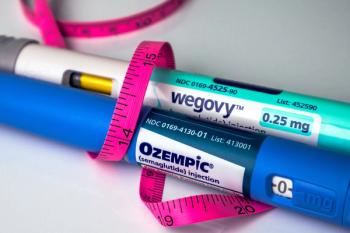
Medication errors associated with Serzone and Seroquel
soundalike drug errors
Medication errors associated with Serzone and Seroquel
By Hye-Joo Kim, Pharm.D., and Jerry Phillips, R.Ph.
Problem: Serzone (nefazodone), approved by the Food & Drug Administration on Dec. 22, 1994, is indicated for the treatment of depression. Manufactured by Bristol-Myers Squibb, it is available as 50-, 100-, 150-, 200-, and 250-mg capsules. Seroquel (quetiapine fumarate), approved on Sept. 26, 1997, is indicated for the treatment of schizophrenia. Manufactured by AstraZeneca, it is available as 25-, 100-, and 200-mg tablets.
As of November 2001, the FDA had received 23 medication error reports involving Serzone and Seroquel. Thirteen of them indicated that Seroquel was mistakenly filled for Serzone; 10 of them indicated that Serzone was erroneously filled for Seroquel. In 21 of 23 cases, the patient took at least one dose of the misfilled drug product.
The primary events noted in these reports included mental status deterioration, nausea, diarrhea, vomiting, muscle weakness, lethargy, dizziness, and complications associated with these disorder. Four patients required emergency room visits, and three patients were hospitalized. One of the hospitalized patients died, although the relationship of the death to the misadministration of Seroquel for three days is unknown.
The FDA is also concerned that several patients ingested unintended Serzone or Seroquel for a prolonged period before discovering the error. In one case, a patient ingested Serzone instead of Seroquel for one month prior to the discovery of the error. This patient required hospitalization. Another patient ingested Seroquel instead of Serzone for six weeks. This patient required an emergency room visit and experienced gastrointestinal pain, nausea, diarrhea, and muscle weakness. The table summarizes the medication error reports received by the FDA as of November 2001.
The names Serzone and Seroquel sound and look similar. The review of these reports indicated a variety of reasons for misfilling of the prescriptions. Pharmacists incorrectly interpreted written and verbal prescriptions; they also labeled and/or filled them incorrectly. Other factors contributing to the medication errors were overlapping strengths (100 mg and 200 mg), identical dosage forms (oral), and identical dosing interval (BID). Because both names start with the same three letters, they are stored next to each other on pharmacy shelves, further increasing the risk of errors. Even the distinctive appearance of the Serzone and Seroquel tabletshexagonal vs. rounddid not prevent the errors. In six incidents, the pharmacists placed Seroquel in a pharmacy bottle labeled Serzone, or vice versa, because they selected the wrong product from the pharmacy shelf.
Recommendation: In order to prevent the occurrence of medication errors, exercise the following precautions.
Educate the staff about the medication errors between Seroquel and Serzone.
Verify all orders for Serzone and Seroquel between pharmacists and prescribers by spelling both the proprietary name and the generic name (e.g., Serzone, nefazodone).
When dispensing Serzone or Seroquel, counsel the patients in detail about their prescribed drug.
Consider using computerized name alerts as well as reminders on drug containers and drug storage shelves.
Separate the products, Serzone and Seroquel, on drug storage shelves.
Hye-Joo Kim is a senior regulatory review officer and Jerry Phillips is associate director for medication error prevention at the Food & Drug Administration.
To report a problem with an FDA-regulated product, please call 1-800-FDA-1088.
Jerry Phillips. Medication errors associated with Serzone and Seroquel. Drug Topics 2002;1:38.
Newsletter
Pharmacy practice is always changing. Stay ahead of the curve with the Drug Topics newsletter and get the latest drug information, industry trends, and patient care tips.




